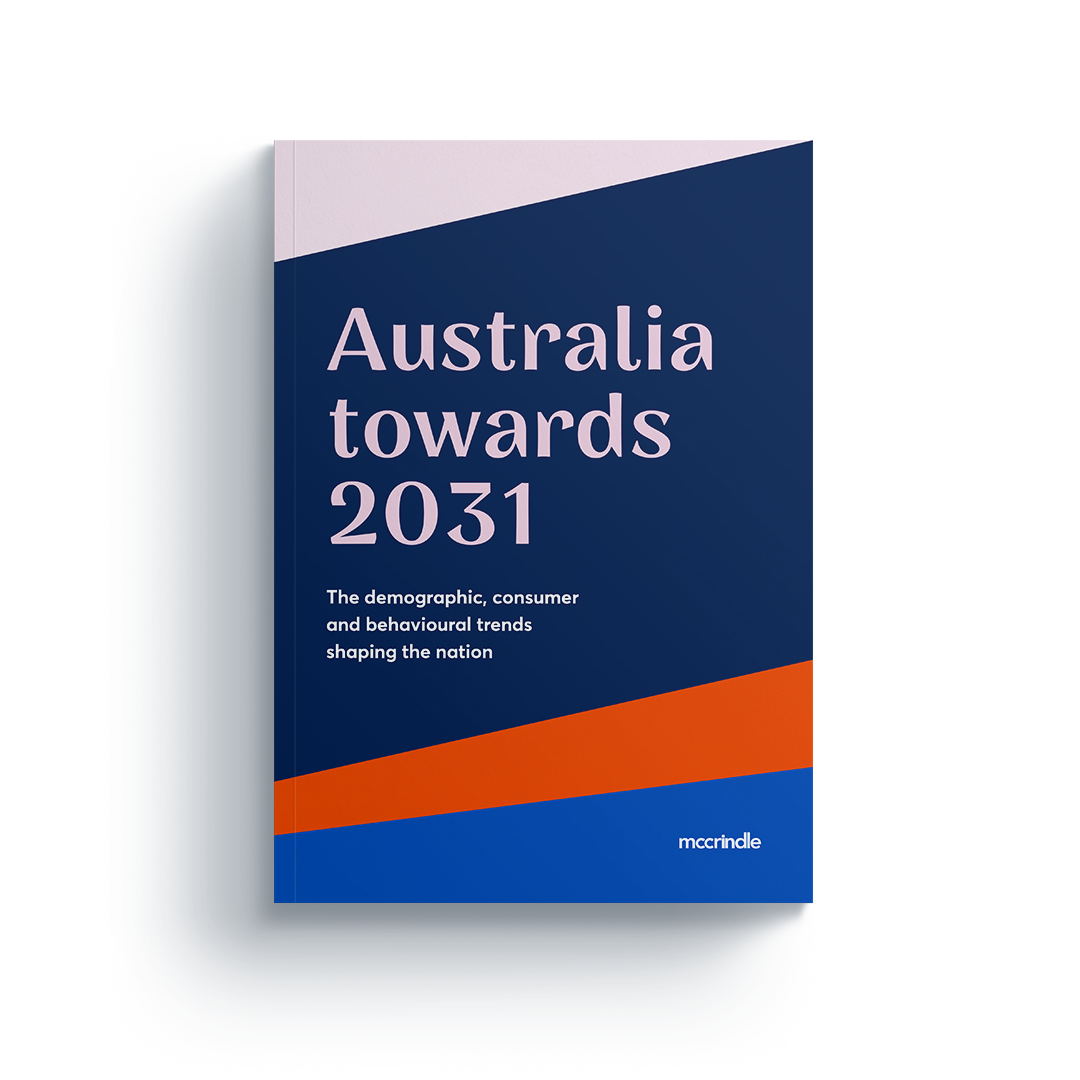Demographics
The Future of Sydney

Sydney is changing. It is growing, densifying and expanding. This McCrindle Research study surveyed 1,007 Sydneysiders in August of 2015 on their attitudes and sentiments towards the future of Sydney with regards to current population size and growth, infrastructure, planning, the house price boom and challenges moving forward.
Demographic snapshot
Sydney is Australia’s largest city, and home to more than 1 in 5 Australians. More people live in Sydney than in the whole country of New Zealand, and its population is larger than the whole of Australia was a century ago. In addition to being Australia’s largest city, it is also the most culturally diverse with 2 in 5 Sydneysiders born overseas. While European settlement of Australia began in Sydney, the city now has connections closer to the region with 6 of the top 10 countries of birth of Sydneysiders born overseas being located in Asia.
63% of the current New South Wales population is living in Sydney, compared to 48% of Queensland’s population that lives in Brisbane. Western Sydney is growing faster than the rest of Sydney currently, and the total population of the areas that comprise greater western Sydney (2.3 million) is larger than the nations of Fiji, Luxemburg, Iceland, Vanuatu, Samoa, Tonga, Greenland, Lichtenstein and Nauru combined! By 2030, the population of Greater Western Sydney will be larger than the rest of Sydney, at almost 3 million.
Sydney’s size
Sydney is Australia’s largest city and was the first to hit 2 million, which it reached in 1959, followed by Melbourne in 1975, Brisbane in 2008 and Perth in 2014.
Based on current growth trends, Sydney will reach a population of 8 million in 2055, the same year that Australia’s 5th largest city Adelaide reaches a population of 2 million. In fact Sydney adds 1,400 people every 6 days which is more than the entire state of Tasmania adds in a year.
While Sydney will hit the 5 million milestone in the next year and 8 million in 2025, more than a third of Sydneysiders (37%) currently think that Sydney’s population is 3 million or less. Only one third of
Sydneysiders (35%) correctly identify Sydney’s population as being close to 5 million.
Sydney’s infrastructure
More than 4 in 5 Sydneysiders believe that the public transport, roads, hospitals and infrastructure is not keeping up with the population growth, with almost half (47%) saying it is nowhere near keeping up. Just 1 in 5 (18%) say that the infrastructure development is keeping up with the population growth.
Sydney’s house price boom
While Sydneysiders experience higher wages than the Australian average, the wage growth has not been keeping up with the house price growth. Four decades ago the average Sydney house price was 5 times the average annual full time earnings. Two decades later, house prices had outstripped earnings to be 6 times annual wages. Such has been the house price boom that today the average Sydney house price is more than 13 times the average annual full time earnings of $77,000.
Sydneysiders don’t believe the current house price growth is being driven by first home buyers or owner occupiers, but rather by investors. 2 in 5 (41%) Sydneysiders say that Australian property investors are driving the current house price boom, while 81% say that it is overseas property investors that are key to the price increases.
Sydney’s challenges
Clearly Sydney is an expensive place to live, and when Sydneysiders were asked what the greatest challenges of Sydney are, the top 2 responses were the cost of living (73%) and the cost of housing (59%). The third biggest challenge is the traffic and commute times (52%) followed by job / employment challenges (29%) and the pace and stress of life (29%).
These challenges for Sydneysiders are such that more than two thirds of local residents (66%) have considered moving out Sydney, with a quarter of all Sydneysiders (23%) saying they have seriously considered it.
The latest demographic data from the Australian Bureau of Statistics quantifies this by showing that Melbourne is now Australia’s fastest growing city, exceeding Sydney’s growth by more than 10,000 people per annum, and while Victoria and Queensland have consistently been experiencing net interstate migration gains for the last decades, New South Wales has over the same period been losing more people to other states than it has been gaining from other states.
Of the Eastern States, Victoria had a net interstate gain of 9,336 last year, Queensland’s gain was 5,598, while New South Wales over the same period had a net loss of 5,572.
From sea change and tree change to city change
When Sydneysiders are considering exiting Sydney, a quarter of them are looking at a sea change or tree change within New South Wales, with another 1 in 20 (5%) considering moving to a rural or regional area interstate. However, more than half of all the would-be leavers (53%) are happy with city living, just not the Sydney life and are looking for another city interstate (32%) or in New South Wales (21%).
Sydney’s sentiment
Sydney residents are not convinced about the direction in which their lifestyle is headed. Less than 1 in 5 (16%) say that Sydney is better than it was 5 years ago and will be even better in 5 years’ time. Overall, Sydney residents are pessimistic about the current realities and future forecasts. Almost two thirds (64%) say that Sydney is worse than it as 5 year ago, with an even larger percentage (66%) believing that it will be worse in 5 years’ time. In fact half of all Sydneysiders (50%) say that Sydney is worse than 5 years ago and will be even worse in 5 years’ time.





